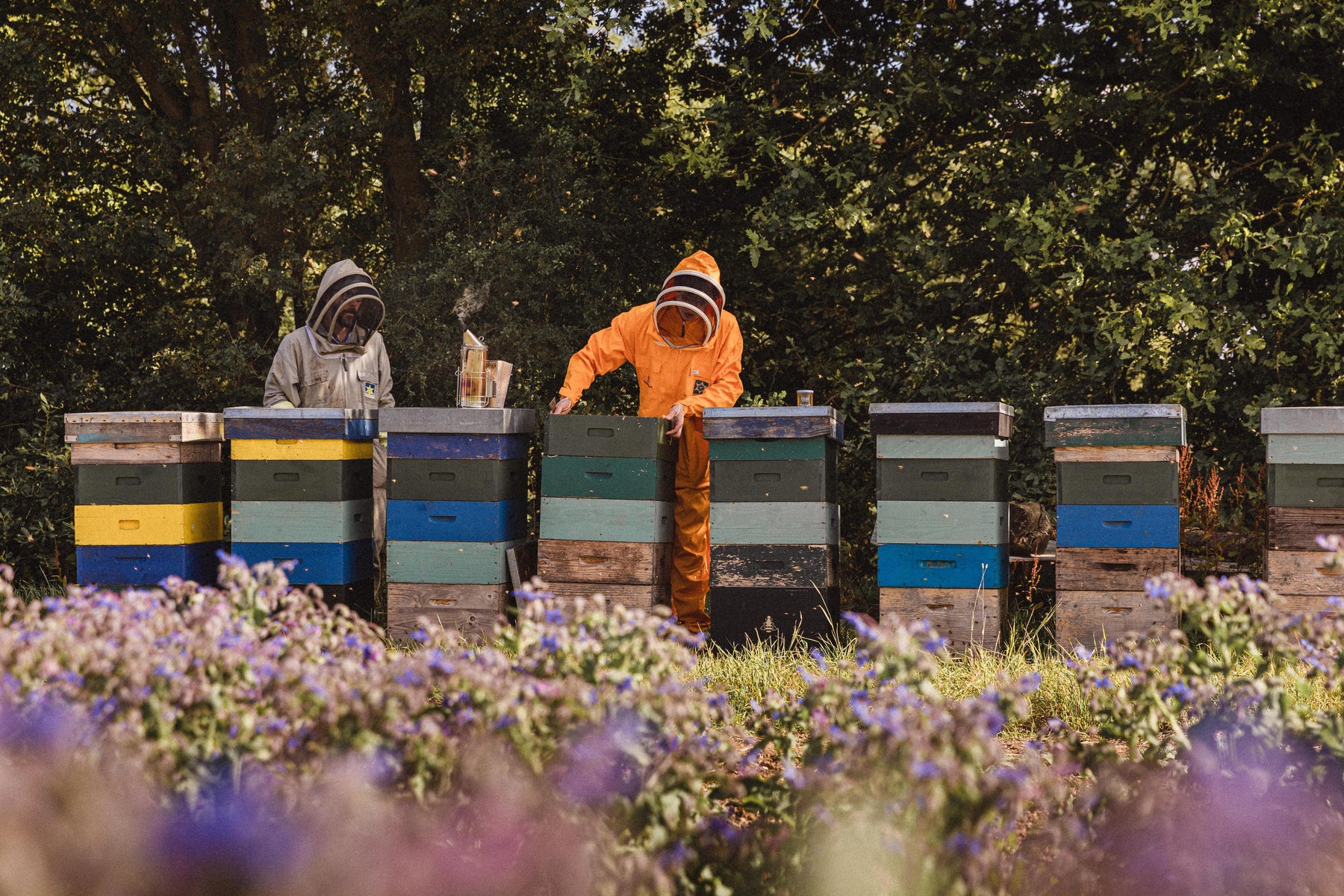
HAYFEVER SEASON WITH HELP FROM THE BEES
Did you know that longer and more intense pollen seasons are something that we are beginning to experience in the UK? If you've found yourself sniffling and rubbing your eyes earlier than normal, your symptoms could very well be caused by hay fever.
Already common during the spring and summer months, our changing climate could see some symptoms starting earlier in the year and for longer durations as temperatures rise. For some types of pollen, this may mean levels high enough to trigger hay fever as early in the year as January or February we're sorry to say.
Just what causes the sneezing, the itching throat? Traditionally we have 3 distinct but overlapping phases in the UK, so knowing what causes your own allergy and when just might help:
MAY - JULY: Grass pollen forms the bulk of the UK’s pollen load.
JUNE - SEP: Weed pollen, such as dock and mugwort, starts to occur from June and can last well into the autumn.
It's estimated that every year millions of people feel the ill-effects of hay fever across the UK. Yet there is currently no scientifically backed cure for hay fever, other than to alleviate it with over-the-counter medication or avoid going outdoors. However, many sufferers take an holistic approach and find consuming local honey and incorporating bee pollen into their diet can help to alleviate their symptoms.
This may be due to its anti-inflammatory and anti-allergic properties, also honey’s ability to act as a form of immunotherapy – a treatment that aims to modify the immune system’s response to allergens. Immunotherapy involves exposing the immune system to gradually increasing doses of allergens, such as pollen, in a controlled manner. This helps desensitise the immune system over time, reducing its hypersensitivity and lessening allergic reactions. As fertilising agents, our bees spend their entire day transferring pollen from plant to plant and also collecting pollen for food, gathering it up to form tiny, compact yellow ‘saddlebags’. Bee pollen is a crucial ingredient when it comes to why our honey tastes so powerfully of the British countryside.
At 30% nectar, each pollen pellet carries a complex hit of nectar’s particular flavour and aroma, and this ends up in both your honeycomb and your honey. So although you can’t see it, you can be sure that you’re both tasting it, and getting its superfood benefits in our honey.
When it comes to honey, gathering consistent data of any kind is notoriously complex. There is still much that we don't understand about the way it works. We suggest the only way to test its impact on your hayfever is to conduct your own, personal experiment - and to make it a sweet enjoyable one.
Cleanse and purify the air around you, naturally.
Because pure and natural beeswax candles release negative ions when they burn, they will naturally help to cleanse the air around you reducing indoor pollutants, such as pollen, dust and dirt, and can effectively reduce allergies, and hay fever. Light the flame and let nature do the work.
Shop British Beeswax Candles.
